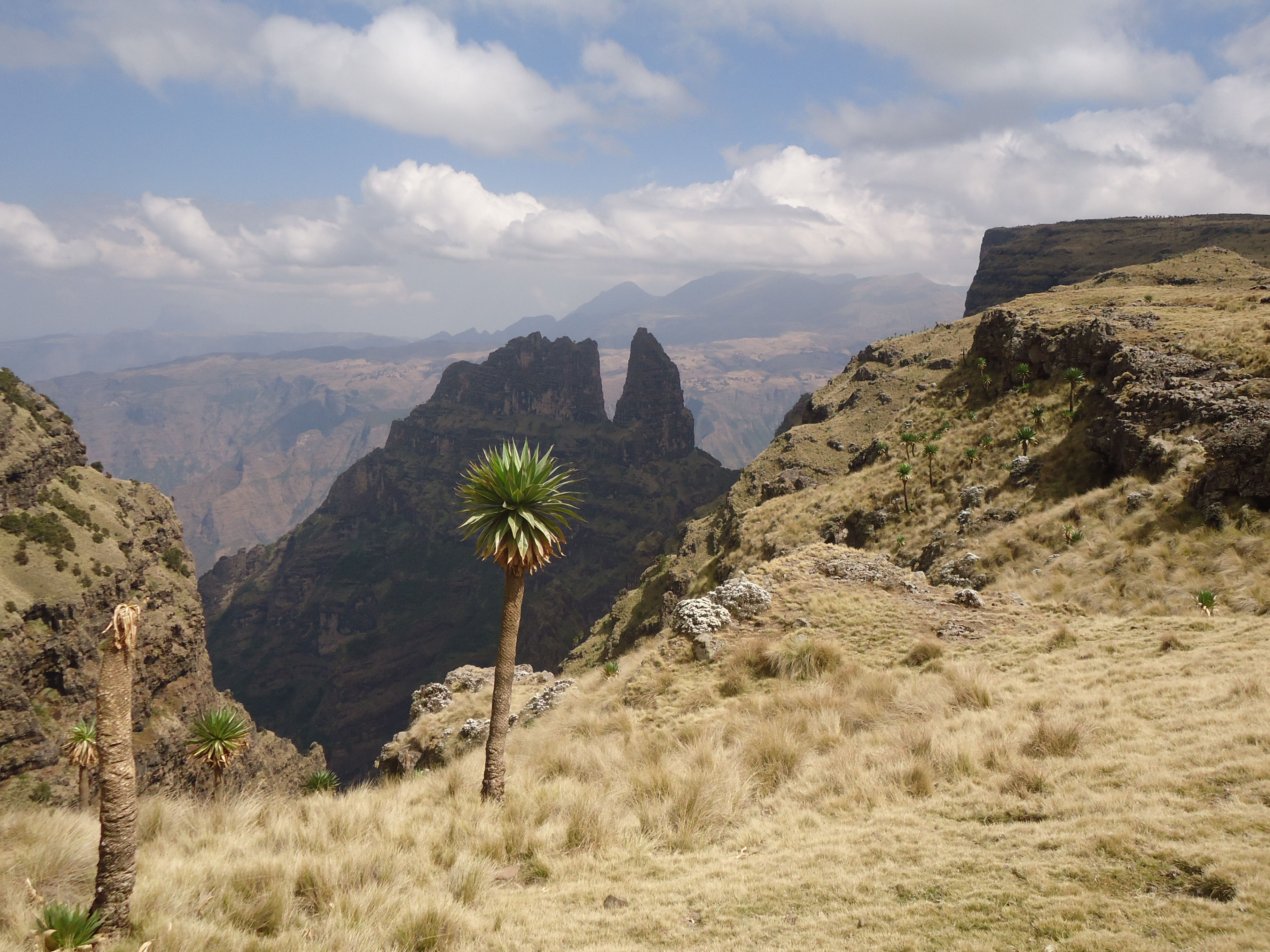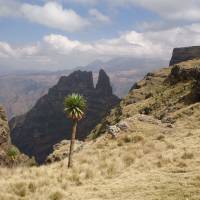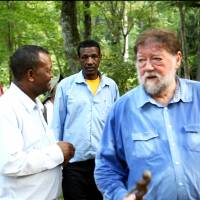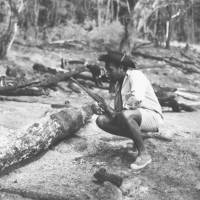In 1967, Ethiopia was the last African country south of the Sahara still without any national parks — an embarrassment for a nation then entertaining ambitions to assume leadership of the continent.
In September that year, after five months on Baffin Island working as a marine mammal technician for the Arctic Unit of the Fisheries Research Board of Canada, I accepted an invitation to become the Game Warden of northern Ethiopia's Simien Mountains, where I was tasked with establishing a national park among rugged peaks that rise to 4,550 meters at the summit of Ras Dashen.
So, after traveling with Inuit guides by dog sled, snowmobile and freighter canoes, I suddenly found myself in those remote and scenically spectacular surroundings where even a Land Rover soon met its match, meaning you walked or rode a horse or mule from then on. Heavy equipment and supplies went into the Simien the same way, with donkeys used for smaller loads.
On my first trip into the mountains with two "game guards" as they were known (now they'd be called "scouts" or "rangers"), it took 11½ hours from a little town called Debarek, where we left our vehicles with the police, to reach our destination up above the tree line in an area called Geech.
Along some stretches of the narrow, rocky trail, two of the guards would jack rounds into the breeches of their rifles, while the other checked that his shotgun was loaded and ready to fire. These men had been involved in the killing of some bandits in the vicinity two months previously and were rightly wary of the victims' relatives seeking revenge. Not wanting to be left out, I jacked a round into my 30.06 (pronounced "thirty-oh-six") hunting rifle, and Ermias, my well-spoken assistant, checked his .38 revolver.
The time I spent in Ethiopia changed my life. It was just over two years full of challenge, adventure, fights, struggles, new experiences — and almost overwhelming frustration and despair.
With some notable, extraordinary and heroic exceptions, the government of Emperor Haile Selassie (1892-1975) was riddled with corruption and beset by apathy. In the Simien there was a lack of roads, schools, clinics or any recognizable social infrastructure. Banditry was rife. I had never seen nor imagined such poverty.
Overgrazing by goats, sheep and cattle, and forest destruction on steep slopes, had brought about erosion, loss of soil, water and wildlife.
On the other hand, so many Ethiopians, whether educated city folk such as my assistant, or illiterate mountain farmers and grazers, were proud and dignified — the men often extremely handsome and the women graceful and beautiful.
Among the Simien game guards, 20 of whom served under me, there was a mixture of Amhara Christians and Muslims. Though a few were utter scoundrels, most were true, loyal and courageous men whom I was, when the time came, very sad to leave.
The only friction I ever noticed between the two groups arose over who should slaughter the goats or sheep I bought as rations while we were on patrol. If a Christian did the deed, the Muslims wouldn't eat the meat, and vice versa; if I did the killing, no one would eat it except me — and meat was a huge treat and bonus for those men. We sought many compromises, but that's another story — one among many that, should you wish, you can read about in my 1971 book "From the Roof of Africa," which is about my experiences in Ethiopia.
The Simien Mountains National Park, established in law in 1969 (after, as Wikipedia notes, it was set up by myself), went on to become one of the earliest UNESCO World Heritage Sites when it was designated in 1978.
But since then war, social turmoil, the effects of grinding poverty and a failure to protect the forest and wildlife have seen more than 90 percent of the original forest cover destroyed, together with the rather fine houses and other buildings we constructed. In fact, UNESCO placed the park on its List of World Heritage in Danger in 1996, and if World Heritage status were to be taken away from the Simien it would deal a heavy blow to both national pride and tourism.
On Aug. 15, as part of earnest efforts to avert this fate, five visitors from Ethiopia came to see me at my home in Kurohime in the Nagano Prefecture hills. Their purpose was to hold discussions together in our Afan Woodland Trust Centre and to see our woodland. We also served lunch, and I cooked dinner. The dessert was a bottle of my latest Yoichi single malt from Hokkaido, served with Antarctic ice.
Those guests were Ewnetu Bilata Debeta, director general of the Ethiopian Wildlife Conservation Authority; Berhan Gebre, deputy bureau head of the Tourism and Parks Development Bureau; Kassie Berehun from the Department of Culture and Tourism; Maru Biyadgie, the warden of the Simien Mountains National Park; and Azanaw Kefyaleu, its tourism officer. They were accompanied by experts from the Center for Advanced Tourism Studies at Hokkaido University and my old friend Dr. Maita Akio, who has done a great deal to promote sustainable ecotourism in Japan and around the world.
On the big screen in our hall I showed them pictures of forest destruction all those years back, of how we had managed to get around, and how we'd constructed various buildings despite there being no roads to bring in timber, cement or sand.
I also told them how I had gone to Asmara, the capital of Eritrea, where there was a U.S. base, to buy antibiotics on the black market to try to deal with an epidemic of typhus in the mountains. Neither the government in Addis Ababa nor foreign aid organizations would give us any help, but I just had to protect my game guards, their families and whoever else I could until the life-saving drugs ran out. And of course I never charged any of those people.
I also told our guests about the many arrests we made of poachers, illegal forest-cutters and so forth, taking them down to Debarek to have the police book them. Unfortunately, as I also recounted, every one of those people was set free through a bribe of some kind. I also told them of how beautiful and special the Simien was.
The director general gave a nice speech, saying that I was an inspiration to them, and that hardly anybody — if indeed anyone at all — could tell Ethiopians now what the Simien was like when the park was established. He asked me to return to Ethiopia, to talk to people in Addis Ababa and in the Simien. I am planning to go in January 2014 — a strange thought, because I was 27 when I became Game Warden of the Simien, and now I am 73.
I don't know what I will be able to achieve, but in those intervening decades I have accumulated nearly 30 years' experience in bringing a woodland back to health, and I have traveled extensively to study forest and watershed rejuvenation, making lots friends and contacts all over the world. In fact, it was seeing what the people of my native South Wales had achieved in restoring woodland and healthy streams to an area devastated by the coal industry — coupled with my experiences in Ethiopia — that gave me the motivation and drive it's taken to restore our Afan woodlands to healthy biodiversity.
Though I thought they'd been wasted, I realize now that those long-ago efforts to protect the forests and wildlife of the Simien have actually become the seeds of today's renewed endeavors. Indeed, Director General Ewnetu told me himself, "What you did and tried to do was not a failure — it was a road map for what we are trying to do now."
So all in all it was both a pleasure and an honor to receive those guests from Ethiopia — and it healed old scars, too; scars left because I'd felt my efforts there had been in vain. Back then, I truly believed in a beautiful, sustainable national park in the northern mountains of Ethiopia. I was not a would-be colonist; I wanted to help conserve the wildlife and the incredibly beautiful scenery, and to be of meaningful assistance to the proud and independent people of Ethiopia. Maybe it's not too late.






















With your current subscription plan you can comment on stories. However, before writing your first comment, please create a display name in the Profile section of your subscriber account page.